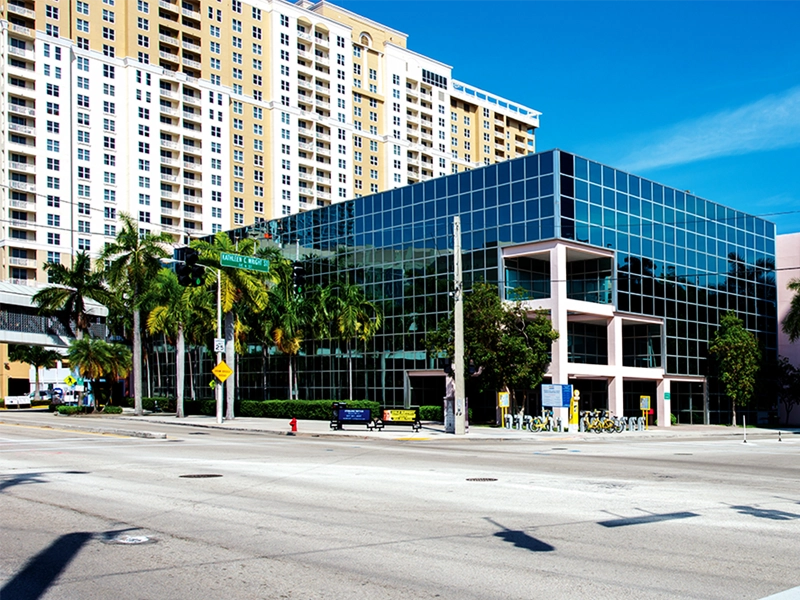As 2024 comes to a close, we’ve curated a selection of standout architectural projects that are awarded and features on the AIA website. These remarkable designs showcase the perfect balance of innovation, sustainability, and functionality, demonstrating how architecture can transform spaces and enrich communities. Here’s a summarized look of the 13 awardees for a quick carousal.
About the Architecture award: The 2024 Architecture program celebrates the best contemporary architecture regardless of budget, size, style, or type. These stunning projects show the world the range of outstanding work architects create and highlight the many ways buildings and spaces can improve our lives.
(source: https://www.aia.org/)
1. Arkansas Museum of Fine Arts (Little Rock, Arkansas)
Architect: Studio Gang | Owner: Arkansas Museum of Fine Arts
This iconic institution underwent a transformative renovation that redefined its identity while honoring its legacy. By seamlessly connecting eight disparate structures with a stunning concrete roof and a central connective space, the museum now offers improved visitor experiences, sustainable landscaping, and a revitalized Art Deco facade. This project demonstrates how adaptive reuse can achieve modern functionality while preserving history.
Reference: AIA Arkansas Museum of Fine Arts
2. Center for Human Ecology (Mount Desert Island, Maine)
Architects: Susan T. Rodriguez and OPAL | Owner: College of the Atlantic
Nestled along Maine’s rugged coastline, this project embodies sustainability and environmental responsibility. Constructed with locally sourced materials and aligned with Passive House standards, the center uses 89% less energy than comparable buildings. Its thoughtful design preserves natural landscapes, incorporates bird-safe glass, and optimizes energy efficiency through solar gains and photovoltaic arrays.
Reference: AIA Center for Human Ecology
3. John A. Paulson Center at NYU (New York City)
Architects: Davis Brody Bond and Kieran Timberlake | Owner: New York University
A beacon of community and academic engagement, this multifunctional facility blends academic spaces, performing arts venues, and student housing into a cohesive design. With features like green roofs, pedestrian pathways, and extensive glazing, the center promotes openness, connectivity, and urban integration while addressing the university’s spatial needs.
Reference: AIA John A. Paulson Center
4. Marion Fire Station No. 1 (Marion, Iowa)
Architect: OPN Architects | Owner: City of Marion
Designed with biophilic principles, this fire station prioritizes the physical and mental well-being of firefighters. Features like circadian lighting, full-height glazing, and green roofs create a healthy environment, while sustainable materials and thoughtful sequencing mitigate carcinogen exposure. This project sets a new standard for public safety facilities.
Reference: AIA Marion Fire Station No. 1
5. One Vanderbilt (New York City)
Architect: Kohn Pedersen Fox Associates | Owner: S.L. Green Realty Corp.
Towering above Midtown Manhattan, One Vanderbilt is a striking example of urban integration and sustainability. The building enhances connectivity to Grand Central Terminal, features LEED and WELL Platinum certifications, and boasts a low carbon footprint. Its terra-cotta facade and tapered design harmonize with neighboring landmarks while offering panoramic views.
Reference: AIA One Vanderbilt
6. Princeton University Residential Colleges (Princeton, New Jersey)
Architect: TenBerke | Owner: Princeton University
Princeton University expanded its campus with two residential colleges, housing 510 students each, while promoting student well-being and fostering a strong sense of community. The design focuses on shared spaces like dining halls, libraries, and multipurpose areas, seamlessly blending transparency, functionality, and sustainability. The restrained material palette minimizes waste while enriching campus life.
7. San Antonio Botanical Garden (San Antonio, Texas)
Architect: Weddle Gilmore Architects | Owner: San Antonio Botanical Garden
This project transformed the garden into a world-class hub for horticultural diversity and community engagement. With new event spaces, discovery centers, and sustainable design elements like vine-covered walls and deep overhangs, the garden now invites visitors to connect with nature and celebrate San Antonio’s unique landscape.
Reference: AIA San Antonio Botanical Garden
8. SoFi Stadium and Hollywood Park (Los Angeles, California)
Architect: HKS | Owner: Stan Kroenke
Home to the NFL’s Los Angeles Rams, SoFi Stadium is more than a sports venue. Its innovative design integrates with the natural landscape, features a Pacific wave-inspired roof, and offers sustainable elements like native gardens and efficient LED systems. Beyond its architectural grandeur, the stadium has become a cornerstone for community engagement, hosting events like COVID-19 testing and food distribution.
Reference: AIA SoFi Stadium
9. Student Success District, University of Arizona (Tucson, Arizona)
Architect: The Miller Hull Partnership, LLP | Owner: University of Arizona
This transformative project integrates student support services into a cohesive, nine-acre district. Renovated historic buildings now provide bright, inviting spaces for academic and counseling services, while new LEED Gold-certified facilities ensure sustainability. The innovative design serves a diverse student body, offering resources vital for academic and personal success.
Reference: AIA Student Success District
10. Thaden School Performing Arts Center (Bentonville, Arkansas)
Architect: Marlon Blackwell Architects | Owner: Thaden School
Fusing Arkansan culture with cutting-edge design, this center reimagines educational facilities by prioritizing sustainability and community engagement. The vibrant green and gold facade references local prairies, while geothermal energy and a high-performance envelope reduce environmental impact. Inside, a versatile performance hall inspires creativity and expression.
Reference: AIA Thaden School Performing Arts Center
11. The Holdsworth Center (Austin, Texas)
Architect: Lake |Flato Architects | Owner: The Holdsworth Center
Nestled along Lake Austin, The Holdsworth Center is a 44-acre campus dedicated to educational leadership. Its thoughtfully designed 15 buildings combine sustainable materials with functionality, offering world-class classrooms, walking trails, and a dock classroom for immersive learning. The center’s master plan balances development with conservation, ensuring the preservation of 38 acres as a conservation easement. This space not only supports Texas educators but also fosters reflection and dialogue while preserving the natural beauty of its surroundings.
Reference: AIA The Holdsworth Center
12. Thurston Hall Renovation (Washington, D.C.)
Architect: VMDO Architects | Owner: The George Washington University
A historic campus icon, Thurston Hall underwent a transformation into a vibrant living-learning environment. The renovation introduced a central courtyard, stepped outdoor terraces, and open public spaces, enhancing natural light and community engagement. Designed with student well-being in mind, the spaces combat isolation through communal kitchens, lounges, and improved air quality. This revitalization preserves the building’s historic exterior while modernizing its interiors to support the next generation of students.
Reference: AIA Thurston Hall Renovation
13. Wagner Education Center (Seattle, Washington)
Architect: Olson Kundig | Owner: Center for Wooden Boats
Located at Lake Union Park, the Wagner Education Center serves as the new home for the Center for Wooden Boats. With its cantilevered walkways and transparency, the design reflects the maritime heritage of the Pacific Northwest. This facility houses a multifunctional sail loft, galleries, and a boat restoration shop, offering hands-on learning experiences. Passive cooling systems align with sustainable principles, and the center continues to host vibrant community programs like the Wooden Boat Festival, enriching the lives of thousands annually.
Reference: AIA Wagner Education Center
These projects remind us that great design is more than aesthetics—it’s about creating spaces that inspire, connect, and sustain. As we move forward, these examples set a benchmark for the possibilities of architecture in shaping our world.
What are your thoughts on these architectural marvels? Share your favorite or tell us about a design that inspired you in 2024!













